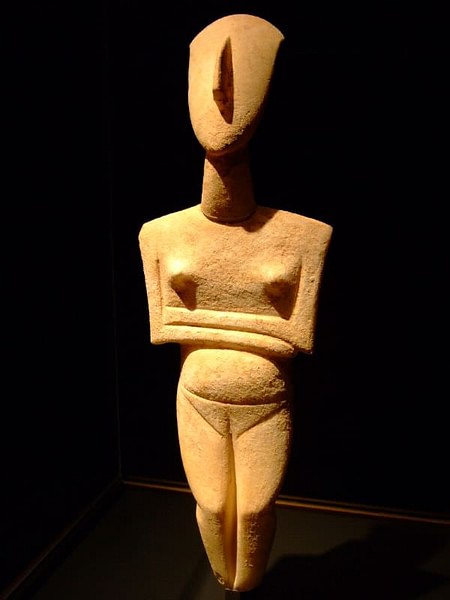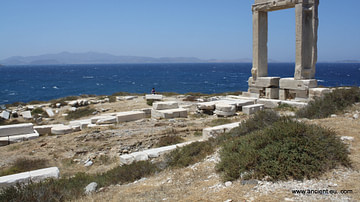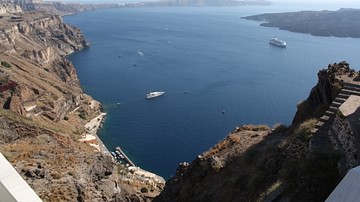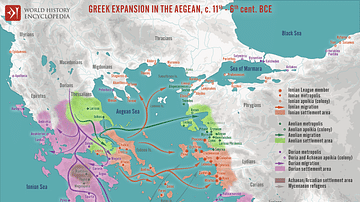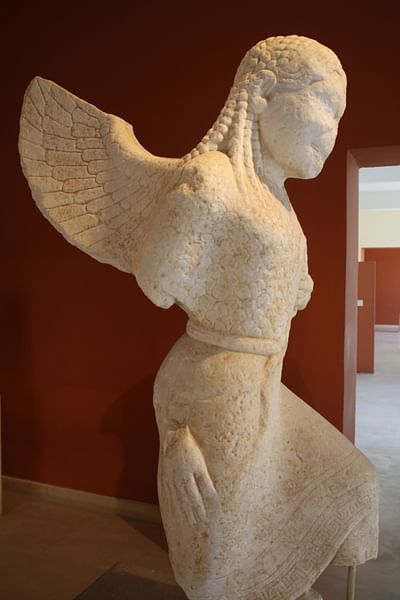
Paros is an island in the Cyclades group in the central Aegean. It is the third largest island of the Cyclades and its position on important sea routes between mainland Greece and the coast of Asia Minor made it an important centre from the early Bronze Age through to Roman times. The island was also famous for the high quality of its marble which became a popular material for sculptors and architects throughout antiquity.
Bronze Age Paros
First inhabited from c. 3200 BCE (or perhaps even earlier), important settlements from the Early Cycladic Period include those at Drios, Avyssos, Galana, Gremna, Kampos, and Plastiras. The relatively high level of culture in the early Bronze Age is attested by the wealth of decorated pottery finds and in Cycladic sculpture which produced elegant marble figures rendered in a minimalistic style.
At the island's capital Parikia (Paroikia) on the west coast the first indications of settlement date to the early 2nd millennium BCE and the area was continuously occupied through Minoan and Mycenaean times and settled by colonists from Attica c. 1000 BCE being occupied until around 700 BCE. On the north coast at Naoussa there was a major Mycenaean settlement which prospered in the 13th century BCE but was destroyed in c. 1200 BCE. Nevertheless, the site was reoccupied from the 10th century BCE and once again enjoyed a period of prosperity from the 9th to the mid-7th century BCE. Koukounaries on the east coast was also an important Mycenaean centre in the 13th and 12th centuries BCE and continued into the mid-7th century BCE. It was here at Koukounaries that the oldest temple on the island was built, the temple to Athena dating to c. 700 BCE and which survived into Classical times.
Trade & Prosperity
From 700 to 500 BCE Paros prospered as a trading centre based on maritime links, indeed the Parians are credited with inventing a new type of vessel, a light ship known as a paron. Agricultural produce from the fertile plains on the island and crafts were traded between the Cycladic islands. The importance of the sea to the culture is evidenced in early Paros coins which depict dolphins and the island's wealth resulted in the founding of a colony on Thasos in the northern Aegean in c. 680 BCE which in turn brought more riches as gold mines were opened up there. Paros also participated in the founding of the trading city of Parion (Parium) on the Hellespont and notable cultural contributions to the wider Greek world included the works of the 7th century BCE poet Archilochos (who even had a temple, the Archilocheion, dedicated to him in the Archaic and Classical periods) and the creation of the 'Melian' style of pottery. In 385 BCE Paros, with support from Syracuse, also founded the colony of Pharos (modern Hvar) off the Dalmatian coast. By the 4h century BCE the island may well have boasted as many as 12,000 citizens.
Paros also became famous for its marble - the lychnitis - which from the Archaic period was exported all over the Greek world and even beyond. Famed for its high degree of translucency, it was a pure white and became a favourite of architects and sculptors. For example, the great masterpieces, the 4th century BCE Hermes of Praxiteles at Olympia and the 2nd century BCE Nike of Samothrace, are sculpted in marble from Paros. The island also had its own celebrated school of sculpture and produced such famous sculptors as Agorakritos in the 5th century BCE and Skopas in the 4th century BCE, who contributed to the temple of Athena at Tegea and the temple of Artemis at Ephesos, respectively. Parian sculptors continued to find ready employment well into the Roman period from which many marble sarcophagi survive. The Archaeological Museum of Parikia also has two outstanding examples of the talent of Parian sculptors: the larger-than-life 6th century BCE winged Gorgon and a 5th century BCE statue of Nike.
Regional Conflicts
Paros was not always peaceful despite or perhaps even because of the island's prosperity. Conflicts with long-time rival Naxos, a neighbouring island in the Cyclades, often ended in defeat and in 489 BCE the Athenian general Miltiades besieged the island for 26 days with a fleet of 70 ships, albeit, without any great success and even getting wounded for his troubles. The pretext for the attack was the fact that Paros had been pro-Persian during the Persian Wars and was accused of supplying ships for the Persians before the Battle of Marathon. In 478 BCE Paros, was, however, compelled to join the Athenian Confederacy and the island became one of the biggest financial contributors to it. In 403 BCE with the end of the Peloponnesian War Paros came under Spartan control until the Athenians once again re-established themselves in the Cyclades and Paros was made to join the second Athenian Confederacy or Delian League in 374 BCE. With the Macedonian invasion of Greece, the League was dissolved and Paros was declared a free and autonomous polis or city-state. In 145 BCE the island came under Roman control and continued to thrive. From the 7th century CE the island, along with its Cycladic neighbours, became a headquarters for pirates and its long period of prosperity finally came to an end.
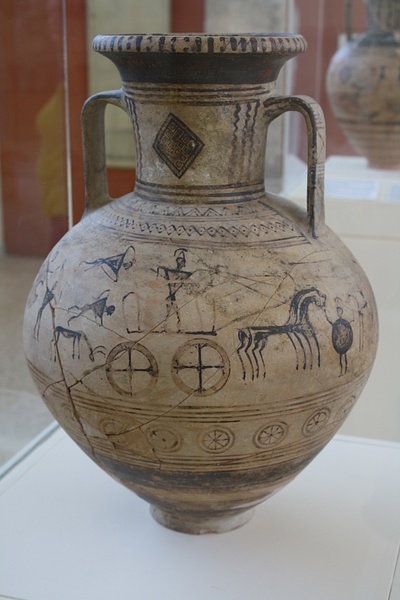
Paros Archaeological Sites
The sanctuary to Apollo and Artemis - the Delion - at Pairikia was founded in the late 9th century BCE and continued to be used until the 5th century BCE. There was another sanctuary dedicated to Apollo south of Parikia, an Asklepion sanctuary was founded in the 4th century BCE and on the hill of Kastro there was a sanctuary dedicated to Athena, the patron of Parikia with a temple built c. 525 BCE. Measuring 32.86 m by 16.5 m and with a façade of six Ionic columns, only the eastern part survives today. Pieces of the temple were reused in the medieval Venetian castle which also cannibalised parts of the stoa which had been repaired and extended in the 2nd century CE. The ancient pieces of masonry such as architraves and column drums are clearly visible in the walls of the castle today. Similarly, a temple to Hestia, another to Dionysos and Persephone, and a theatre, all attested to in written records, have since disappeared, their valuable stonework having been reused in later buildings or the sites built over.
Other important archaeological discoveries include parts of Parikia's once extensive fortifications from the 6th century BCE which had surrounded the city creating a perimeter of 2.5 km. There are also various Roman public buildings, Hellenistic villas, a Hellenistic pottery workshop and a cemetery just outside Parikia which had been in use from the 8th century BCE to the 3rd century CE. Finally, the town of Parikia is still dominated by the fine church of Panayia Ekatondapyliani or Katapoliani, first constructed in the 6th century CE by Justinian and which claims to have 100 entrances and was built on the site of the Roman gymnasium.
